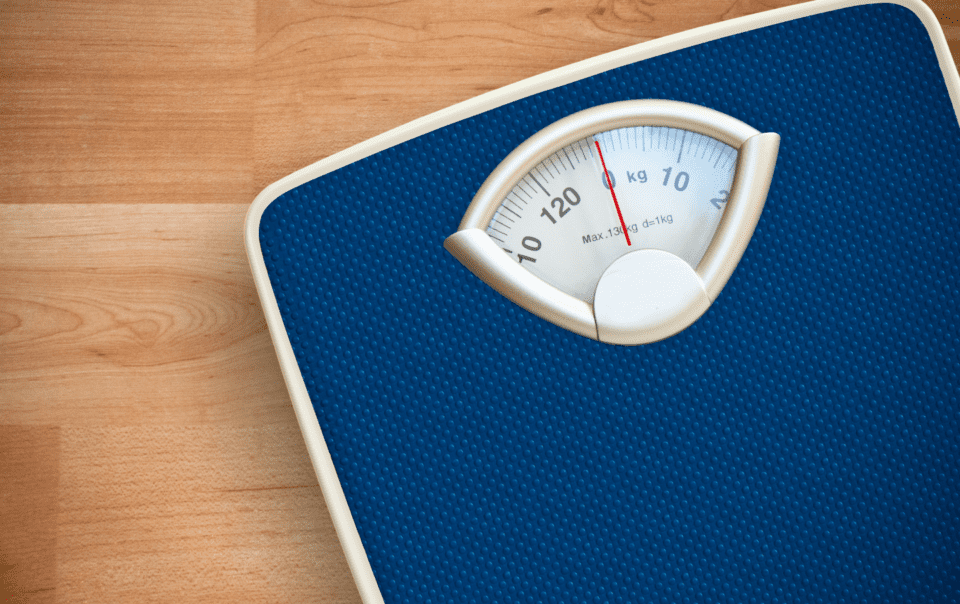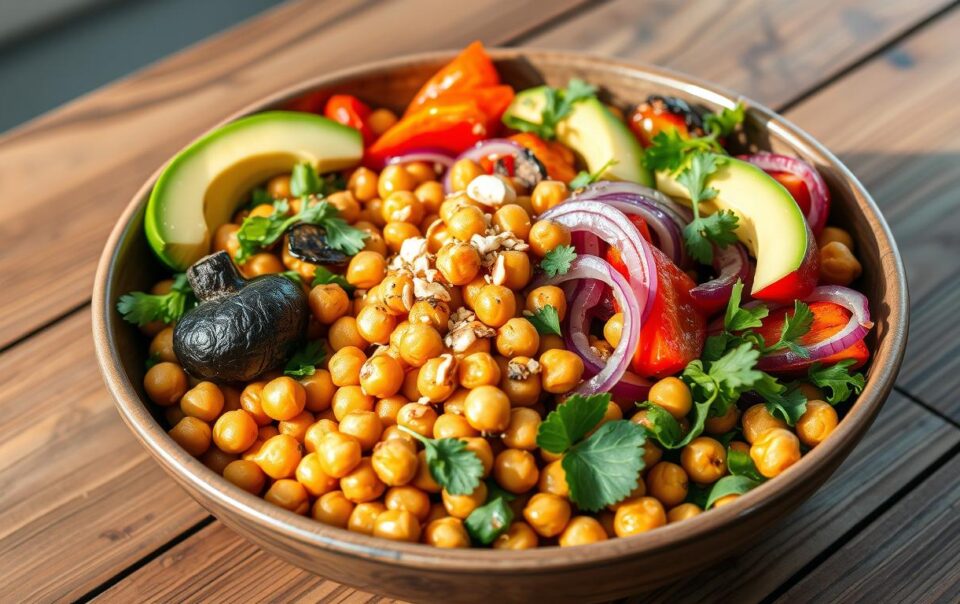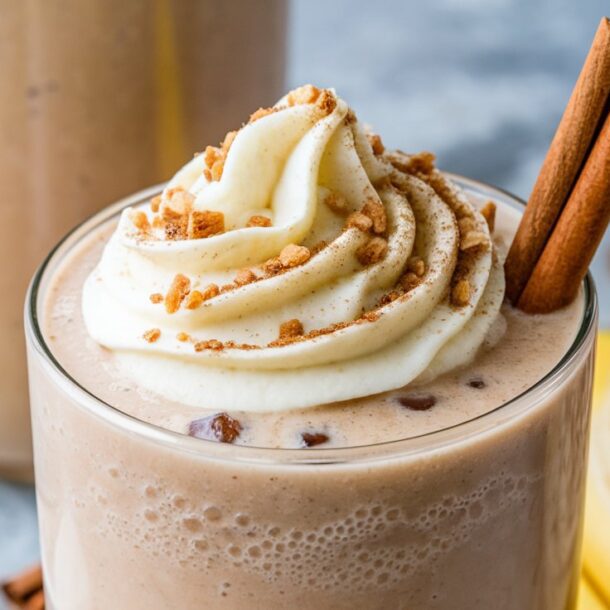
Please note: This website contains affiliate links. As an Amazon Associate, we earn from qualifying purchases at no additional cost to you.
Carb cycling is a diet strategy that alternates between high-carb, moderate-carb, and low-carb days to match your energy needs and activity levels. It’s popular for its ability to boost fat burning, support muscle maintenance, and keep your metabolism active.
While carb cycling can help with weight loss, athletic performance, or managing specific health goals, it does require careful planning and tracking. For most people, it’s best used as a short-term strategy due to its complexity.
In this guide, we’ll break down the basics of carb cycling, explore how it works, and offer practical tips to help you make the most of this approach.
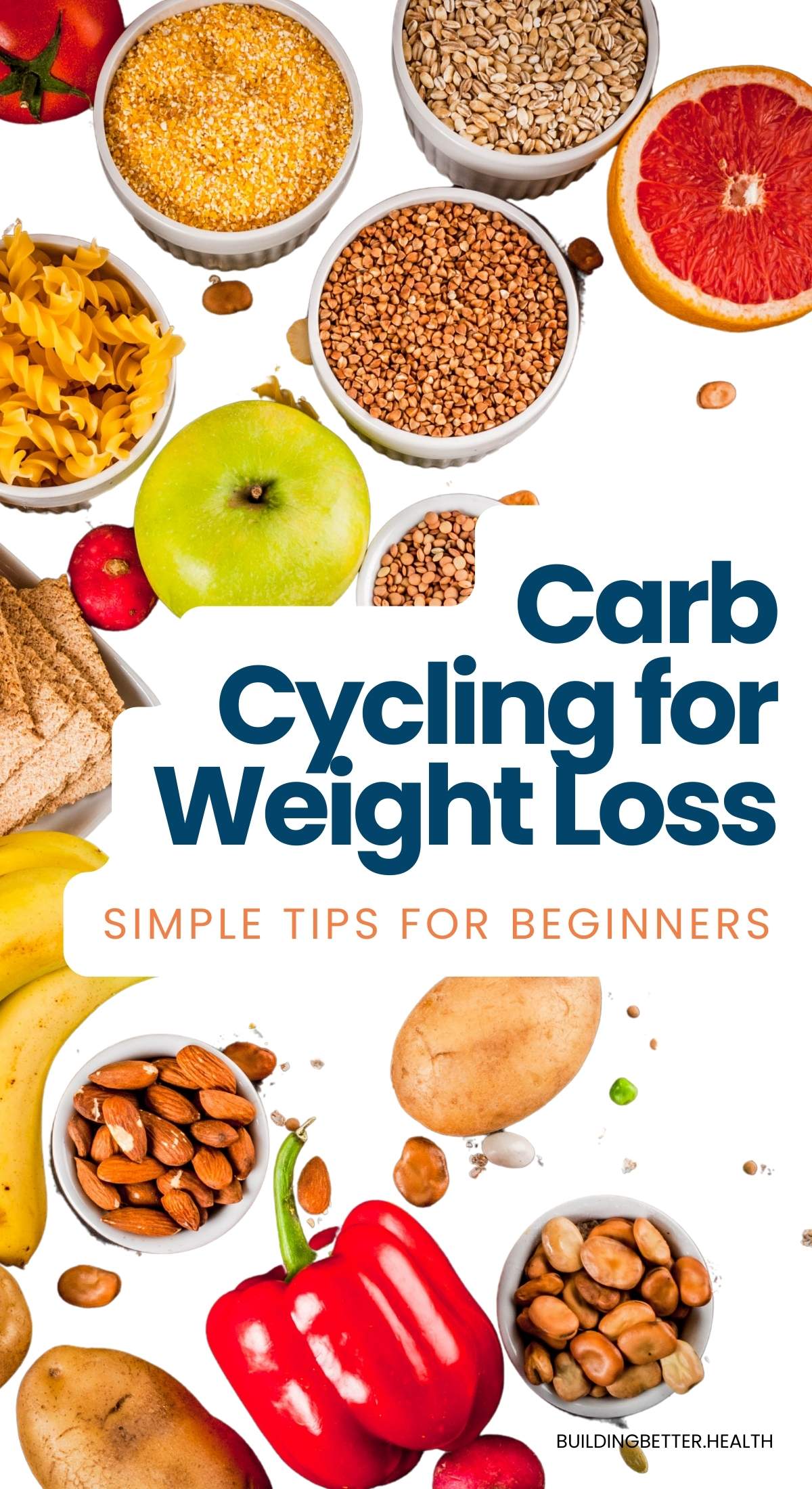
What Makes Carb Cycling Different from Regular Diets?
Carb cycling stands out because it doesn’t ask you to cut carbs entirely or eat the same way every day. Instead, it adjusts your carbohydrate intake based on your workout schedule and energy needs. You’ll alternate between high-carb, low-carb, and sometimes medium-carb days. This flexible approach helps prevent common dieting pitfalls like slowing metabolism or losing muscle while promoting fat burning and muscle preservation as you lose weight.
The Science Behind Carb Cycling
Carb cycling works by strategically managing your body’s use of glycogen (stored carbs), insulin (a hormone that regulates blood sugar), and leptin (a hormone that influences hunger and metabolism). Here’s how it works:
- Low-Carb Days: These help your body rely more on stored fat for energy, improving fat burning and insulin sensitivity.
- High-Carb Days: These refill your glycogen stores, giving you the energy needed for intense workouts. High-carb days also increase leptin levels, which can boost metabolism and prevent your body from going into a “calorie-saving” mode often seen in prolonged low-calorie diets.
By alternating carb intake, your body gets the best of both worlds: efficient fat burning and consistent energy.
How Carb Cycling Affects Your Metabolism
Unlike traditional diets that can slow your metabolism over time, carb cycling keeps it adaptable and active. On low-carb days, your body burns more fat for fuel. On high-carb days, it switches to burning carbs and boosts calorie-burning hormones like leptin.
This flexibility helps your body avoid the plateau effect common with strict diets, where it gets too comfortable with one way of eating. By constantly switching between low- and high-carb days, carb cycling supports weight loss, muscle maintenance, and overall metabolic health without the drawbacks of extreme dieting.
Carb Cycling for Weight Loss: Scientific Evidence and Benefits
Research on carb cycling is still growing, but some studies show promising results. A 2024 study found that carb cycling with intense workouts can help with weight loss. It keeps muscle mass by giving enough carbs on workout days.
It might also make your body better at using insulin and avoid the negative effects of long-term dieting. But, we need more studies to know its long-term effects and best practices.
The benefits of carb cycling for losing weight and staying healthy include:
- Helping with fat loss while keeping muscle mass
- Improving metabolic adaptation and insulin sensitivity
- Keeping energy levels up and reducing tiredness during weight loss
- Boosting workout performance and recovery on high-carb days
| Carbohydrate Intake | Recommendations |
|---|---|
| Total Calories | 45-65% from carbohydrates |
| Grams per Day (2,000 calories) | 225-325 grams |
| Grams per Kilogram (Strenuous Exercise) | 8-12 grams |
| Low-Carb Diet | Fewer than 130 grams or less than 26% of total calories |
| Carb Cycling for Weight Loss | Low-carb for 5-6 days, high-carb for 1-2 days |
IMPORTANT NOTE: Carb cycling is not a long-term diet plan and is not healthy for everyone. Always talk to a doctor or dietitian before starting it. They can help make sure it fits your health and fitness goals.
How to Structure Your Carb Cycling Days
Carb cycling helps manage your macronutrients and calorie intake. It involves changing your carb intake to boost metabolism and performance. This is especially true when you pair it with a good workout plan.
High-Carb Days: Timing and Portions
On high-carb days, you’ll eat about 60% of your calories from carbs. These days match your most intense workouts. This gives your body the fuel it needs to perform well.
The carb intake on these days is about 2-2.5 grams per pound of body weight.
Example: If you are 200 lbs, you’ll need to eat
Low-Carb Days: Guidelines and Recommendations
Low-carb days aim to make your body burn fat. You’ll limit carbs to around 50 grams, focusing on veggies and healthy fats. This helps keep muscle mass while losing fat.
On these days, you might eat more protein, about 1.5 grams per pound of body weight.
Moderate-Carb Days: Finding Balance
Moderate-carb days offer a balanced mix of nutrients. You’ll eat about 1.5 grams of carbs per pound of body weight. Protein intake stays consistent, and fat intake adjusts to meet calorie goals.
Alternating between high-, low-, and moderate-carb days helps create a balanced plan. It matches your workout intensity and calorie needs. Always watch how your body reacts and adjust as needed for long-term success.
| Carb Cycling Macronutrient Breakdown | High-Carb Days | Moderate-Carb Days | Low-Carb Days |
|---|---|---|---|
| Carbohydrates (g/lb of body weight) | 2-2.5 | 1.5 | 0.5 |
| Protein (g/lb of body weight) | 1 | 1-1.2 | 1.5 |
| Fat (g/lb of body weight) | 0-0.15 | 0.2 | 0.35-0.8 |
Best Foods to Eat During Carb Cycling
Carb cycling is all about eating high-quality foods to help you reach your weight loss or fitness goals. On high-carb days, eat foods like sweet potatoes, oatmeal, and whole-wheat bread. Also, include brown rice, quinoa, and a variety of fresh fruits. These complex carbohydrates are full of fiber and give you lasting energy for workouts and daily tasks.
On low-carb days, focus on lean proteins, healthy fats, and fiber-rich veggies. Choose leafy greens, eggplant, tomatoes, broccoli, peppers, and cauliflower. These foods keep you full and support fat loss and health.
It’s important to get enough fiber every day. Fiber helps you feel full, controls cholesterol, and keeps your gut healthy. Stay away from refined sugars and processed foods to avoid setbacks.
| High-Carb Days | Low-Carb Days |
|---|---|
|
|
By mixing complex carbohydrates, lean proteins, healthy fats, and fiber-rich foods in your carb cycling, you’ll boost your energy, performance, and health.
Common Mistakes to Avoid When Carb Cycling
Carb cycling can help with weight loss, but it has its own set of challenges. To make the most of it, you need to avoid common mistakes. Let’s look at the top errors to dodge when carb cycling.
Timing Errors in Carb Consumption
Getting the timing right for carbs is crucial. Eating too many carbs on non-workout days or not enough on high-carb days can mess up your plan. It’s important to plan your meals and track your macronutrients to get the right carb amounts at the right times.
Poor Food Choices and Portion Control
Just because you’re carb cycling, it doesn’t mean you can eat junk food on high-carb days. Stick to whole, nutrient-rich carbs and keep your portions in check. This helps you stay on track with your weight loss goals.
Overlooking Other Macronutrients
Carbs are the main focus in carb cycling, but don’t forget about protein and healthy fats. Getting a balanced mix of all three is vital for keeping muscle, supporting your metabolism, and boosting your health.
Avoiding these mistakes and focusing on nutrient balance, meal planning, and tracking macronutrients can help you get the most out of carb cycling. This way, you can achieve lasting weight loss and better health.
Combining Exercise with Carb Cycling for Maximum Results
Adding exercise to your carb cycling routine can boost your athletic performance and body shape. On high-carb days, do intense workouts or endurance training. This gives you the energy you need to perform well. On low-carb days, take it easy or rest. This helps your body burn fat.
Endurance athletes can see big gains by using carb cycling before the season starts. It fills up muscle glycogen stores and boosts performance when carbs are back. Strength training and HIIT can be matched with carb intake to grow muscles and lose fat. But remember, everyone reacts differently, so listen to your body and adjust as needed.
By matching your workouts with your carb cycling, you can get the most out of it. Try different things, watch how you do, and tweak your plan as you go. Find the perfect mix that fits your fitness goals and lifestyle.
FAQ
What is carb cycling?
Carb cycling is a diet plan that switches between eating lots of carbs, some carbs, and few carbs. It matches carb intake with workout days and long-term goals. This helps the body burn fat on low-carb days and boosts metabolism on high-carb days.
How does carb cycling work?
It works by changing how much carbs you eat to better use nutrients. It aims to control glycogen, insulin, and leptin levels. This helps lose fat and keep muscle.
What are the potential benefits of carb cycling?
Studies show it can help with weight loss when combined with exercise. It may also keep muscle, improve insulin use, and lower metabolic slowdown risks.
How do you structure a carb cycling plan?
High-carb days are for intense workouts and eat 60% of calories from carbs. Low-carb days limit carbs to 50 grams, focusing on veggies and fats. Moderate days balance both.
What are the best foods to eat during carb cycling?
Eat complex carbs like sweet potatoes, oatmeal, and whole grains on high-carb days. On low-carb days, choose lean proteins, healthy fats, and low-carb veggies.
What are common mistakes to avoid when carb cycling?
Avoid wrong carb timing, bad food choices, ignoring other nutrients, overcomplicating, and not planning meals.
How can you combine exercise with carb cycling?
Match high-carb days with intense workouts or endurance. Use low-carb days for rest or light activity. Time strength and HIIT workouts with carb intake for best results.
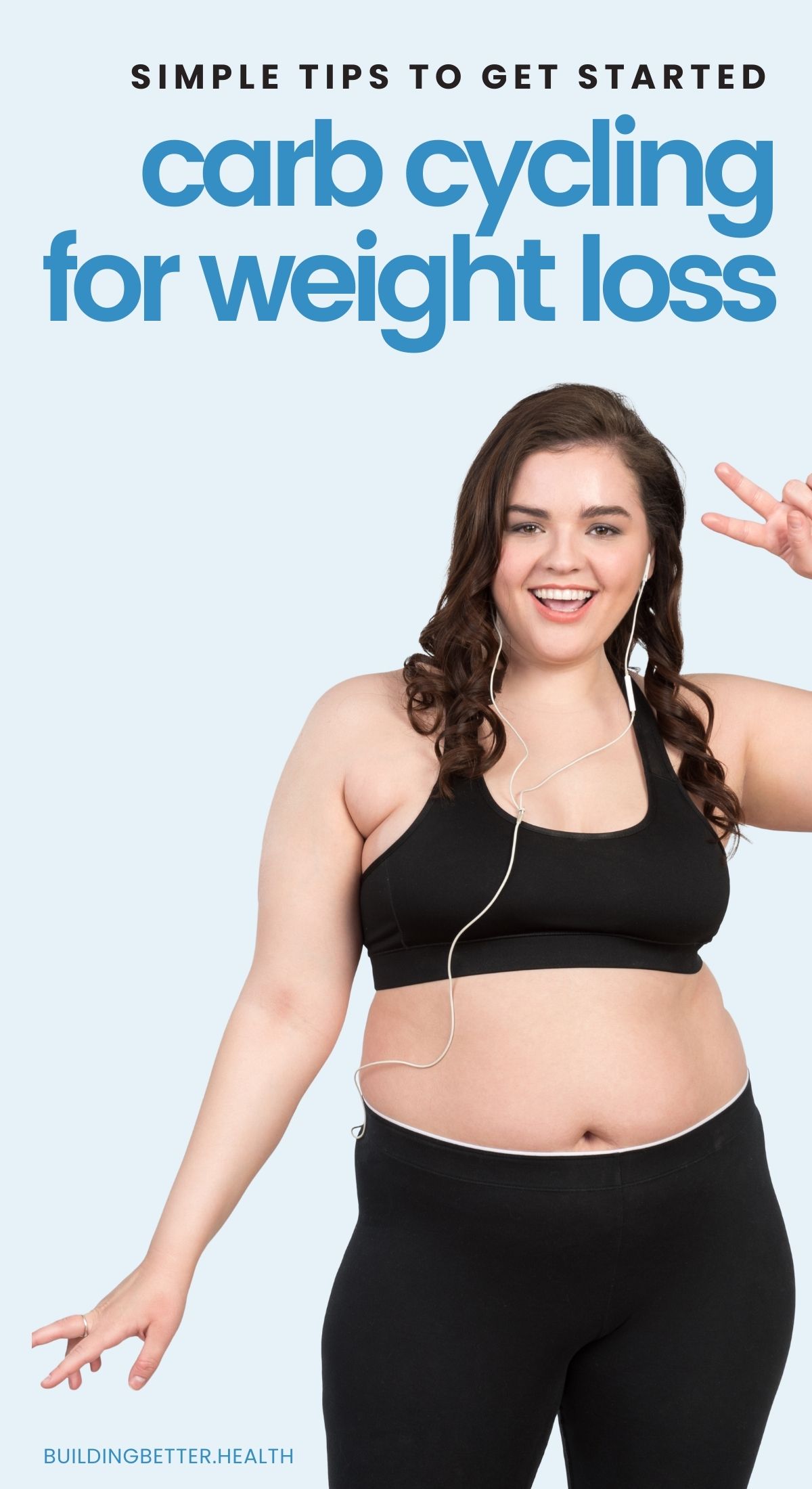
Source Links
- Carb cycling: Benefits, evidence, and how to do it – https://www.medicalnewstoday.com/articles/carb-cycling
- Carb Cycling Diet—What Is It? Does It Work? – https://www.eatingwell.com/article/286043/carb-cycling-diet-what-is-it-does-it-work/
- What Is Carb Cycling — and Should You Try It? – https://www.shape.com/healthy-eating/diet-tips/what-is-carb-cycling
- Carb cycling for weight loss | Diets for your metabolism | Lumen | Lumen – https://www.lumen.me/blog/carb-cycling-for-weight-loss-a-beginner-s-guide
- Metabolic Confusion, Carb Cycling, and Hypothyroidism Weight Loss | Paloma Health – https://www.palomahealth.com/learn/metabolic-confusion-carb-cycling-hypothyroidism-weight-loss?srsltid=AfmBOoq8WXepx8AavZpfyoFyTua1q1jjvVbh4JmOnIOZJd3TIiy8MolG
- Can Carb Cycling Improve Your Fitness? – https://www.health.com/carb-cycling-8715651
- What Is Carb Cycling and Can It Help You Lose Weight? – https://www.loseit.com/articles/what-is-carb-cycling-and-can-it-help-you-lose-weight/
- 7-Day Carb-Cycling Meal Plan & Recipe Prep – https://www.verywellfit.com/7-day-carb-cycling-meal-plan-ideas-recipes-and-prep-6363205
- Carb Cycling: A Beginner’s Guide and Meal Plan – Athletic Insight – https://www.athleticinsight.com/diet/carb-cycling
- Top 15 Reasons You’re Not Losing Weight on a Low-Carb Diet – https://www.healthline.com/nutrition/15-reasons-not-losing-weight-on-a-low-carb-diet
Please note: This website contains affiliate links. As an Amazon Associate, we earn from qualifying purchases at no additional cost to you.


